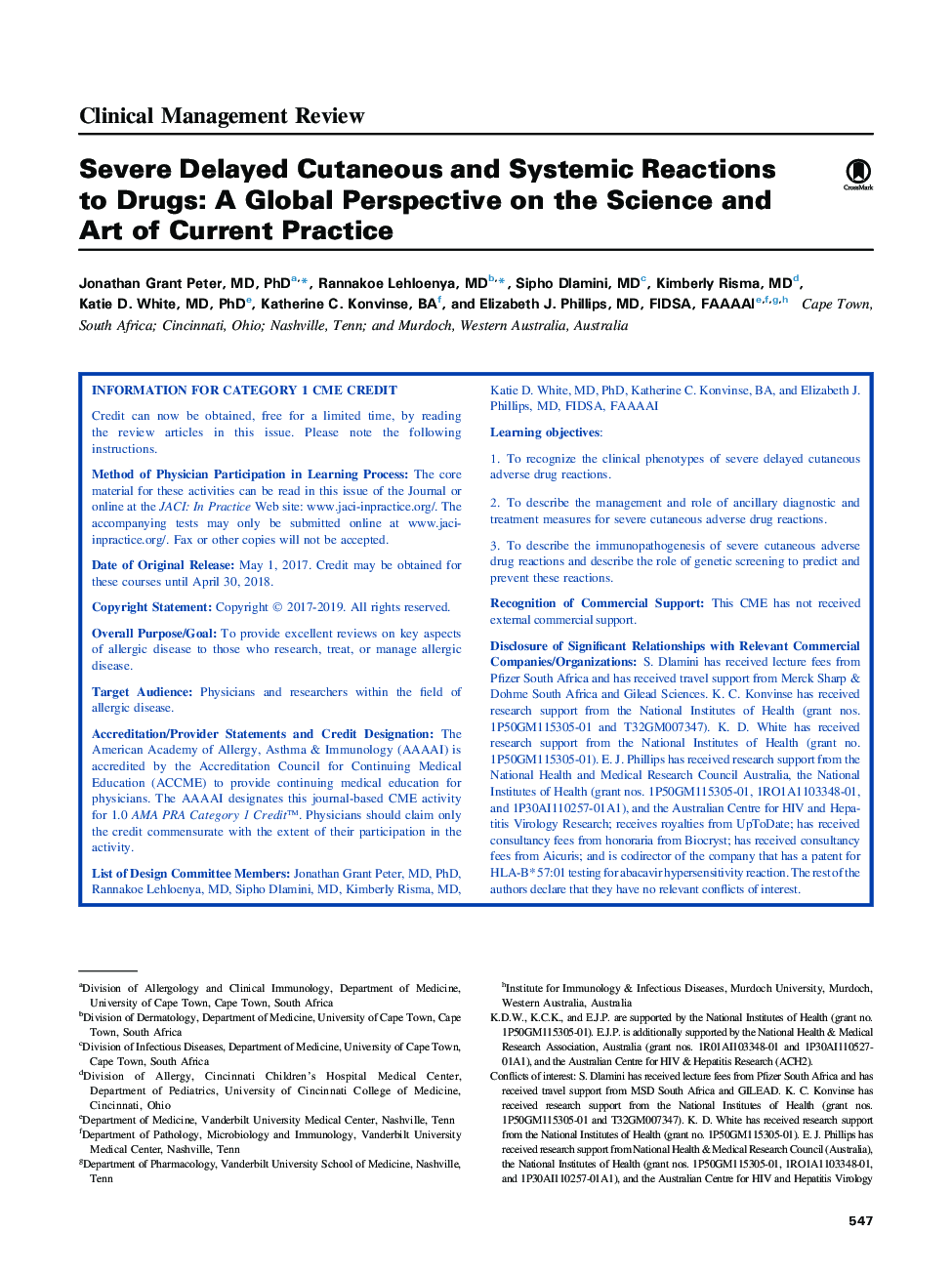| Article ID | Journal | Published Year | Pages | File Type |
|---|---|---|---|---|
| 5647221 | The Journal of Allergy and Clinical Immunology: In Practice | 2017 | 17 Pages |
Abstract
Most immune-mediated adverse drug reactions (IM-ADRs) involve the skin, and many have additional systemic features. Severe cutaneous adverse drug reactions (SCARs) are an uncommon, potentially life-threatening, and challenging subgroup of IM-ADRs with diverse clinical phenotypes, mechanisms, and offending drugs. T-cell-mediated immunopathology is central to these severe delayed reactions, but effector cells and cytokines differ by clinical phenotype. Strong HLA-gene associations have been elucidated for specific drug-SCAR IM-ADRs such as Stevens-Johnson syndrome/toxic epidermal necrolysis, although the mechanisms by which carriage of a specific HLA allele is necessary but not sufficient for the development of many IM-ADRs is still being defined. SCAR management is complicated by substantial short- and long-term morbidity/mortality and the potential need to treat ongoing comorbid disease with related medications. Multidisciplinary specialist teams at experienced units should care for patients. In the setting of SCAR, patient outcomes as well as preventive, diagnostic, treatment, and management approaches are often not generalizable, but rather context specific, driven by population HLA-genetics, the pharmacology and genetic risk factors of the implicated drug, severity of underlying comorbid disease necessitating ongoing treatments, and cost considerations. In this review, we update the basic and clinical science of SCAR diagnosis and management.
Keywords
SSLRCADRSJS/TENTregSCORTENsevere cutaneous adverse drug reactionsADRHHVSJSAGEPHLAserum sicknessTuberculosisPatch testingSCARtenT-cellStevens-Johnson syndromesevere cutaneous adverse reactionAdverse drug reactionDRESSRegulatory T Toxic epidermal necrolysisCutaneous adverse drug reactionhuman herpes virusAcute generalized exanthematous pustulosis
Related Topics
Life Sciences
Immunology and Microbiology
Immunology
Authors
Jonathan Grant MD, PhD, Rannakoe MD, Sipho MD, Kimberly MD, Katie D. MD, PhD, Katherine C. BA, Elizabeth J. MD, FIDSA, FAAAAI,
